Physical Address
304 North Cardinal St.
Dorchester Center, MA 02124
Physical Address
304 North Cardinal St.
Dorchester Center, MA 02124
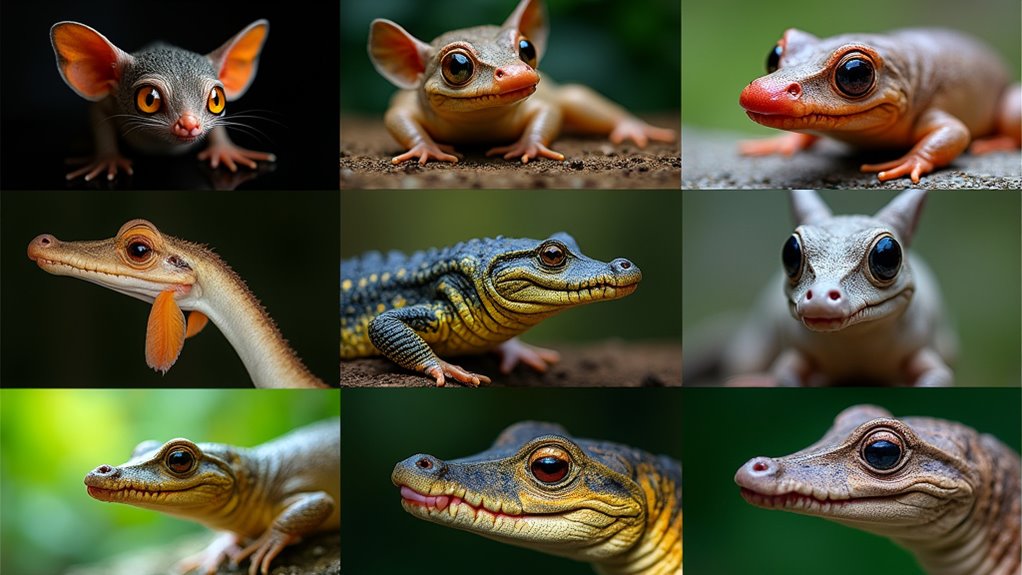
Beyond pandas and tigers, Asia harbors bizarre creatures like bulbous-nosed monkeys and bleeding-heart birds that will astonish wildlife enthusiasts.
Asia hosts remarkable wildlife you’ve likely never heard of: the proboscis monkey with its distinctive bulbous nose, the elusive saola (discovered only in 1993), the Mindoro bleeding-heart bird with its crimson chest, and the critically endangered Philippine crocodile. You’ll also find the vociferous tokay gecko, mighty atlas beetle, fearsome Asian giant hornet, selfie-famous Sulawesi macaque, and gentle dugong sea cow. These fascinating creatures reveal Asia’s extraordinary biodiversity beyond its famous pandas and tigers.
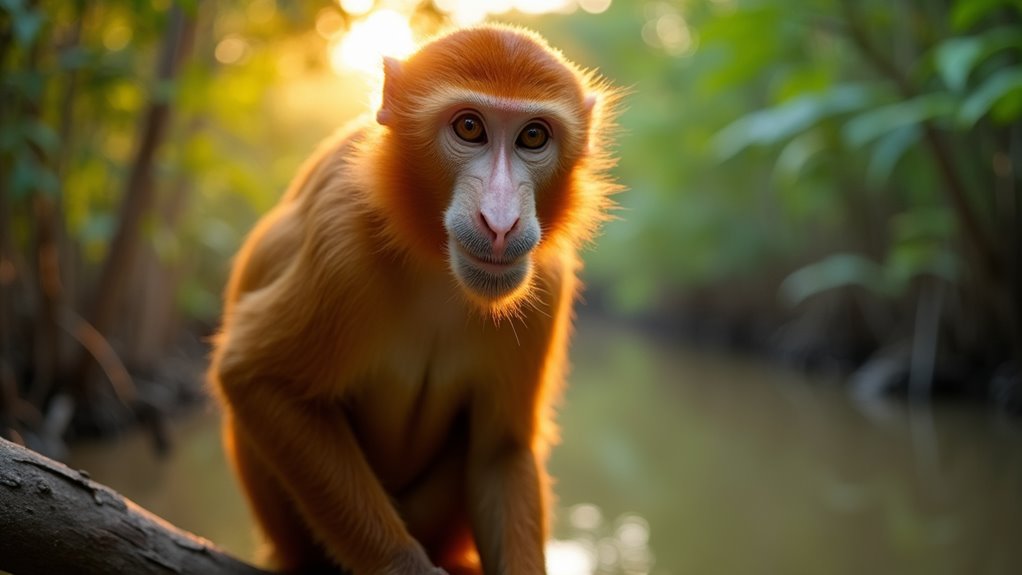
While many primates call Asia home, none are quite as distinctive as the Proboscis monkey with its unmistakable elongated nose. Found exclusively in Borneo’s coastal regions, these endangered primates thrive in mangrove forests and riverine habitats below 200m elevation.
Asia’s most distinctive primate, the Proboscis monkey, thrives exclusively in Borneo’s coastal mangroves with its unmistakable elongated nose.
Males sport bulbous noses up to 10cm long and weigh 20-24kg, while females are markedly smaller at 7-12kg. You’ll spot their reddish-brown bodies and pot-bellied appearance from specialized digestive systems that ferment tough mangrove leaves. These highly social creatures typically organize themselves into one-male groups with several females and their offspring.
These exceptional swimmers can travel 20m underwater and cross rivers up to 150m wide. They’re entirely dependent on waterways, rarely venturing beyond 1km from water sources. Observing these unique primates in their natural habitat is a highlight for many travelers on wildlife tours in Cambodia.
Sadly, their population has declined over 50% in 40 years due to habitat loss from palm oil plantations and mangrove conversion.
In the dense evergreen forests along the Vietnam-Laos border lurks one of zoology’s most mysterious mammals: the saola, aptly nicknamed the “Asian unicorn” despite having two parallel horns.
You’ve probably never seen this critically endangered creature—only photographed three times in the wild, with the last image captured in 2013. First reported in 1992 and scientifically described the following year, this elusive animal resembles an antelope but is more closely related to cattle.
Weighing between 176-220 pounds and measuring up to 6’4″ in length, the saola feeds on various plants throughout the Annamite Mountains. Their distinctive white facial markings make them appear masked when spotted in their rare appearances.
With fewer than 100 individuals estimated to remain, they’re possibly extinct now. Unlike many species, they survive poorly in captivity, making conservation efforts in their natural habitat essential to any hope of their survival. Researchers employ innovative techniques like collecting blood via leeches to detect Saola DNA in their ongoing search efforts.
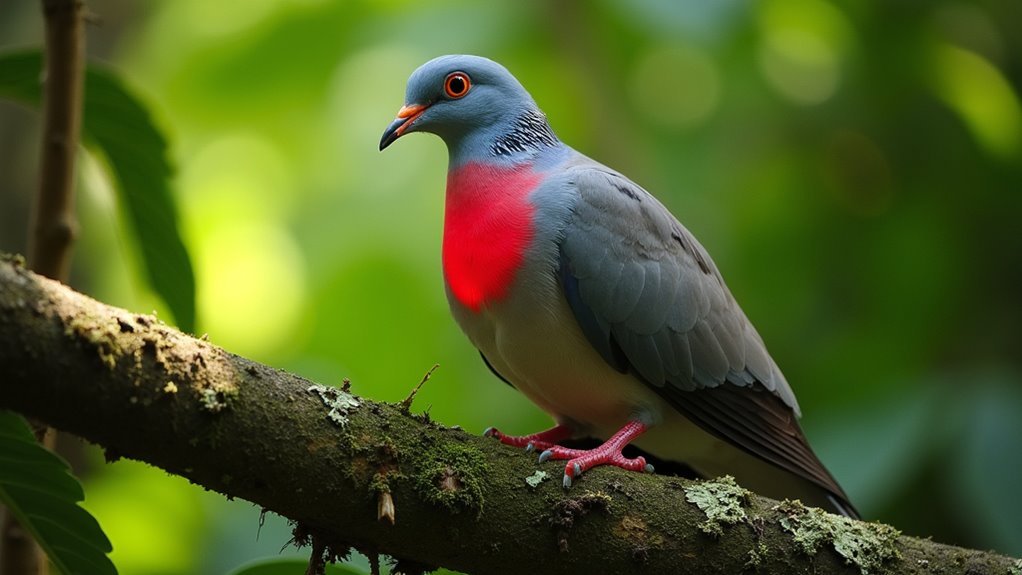
Among Asia’s rarest birds, the Mindoro Bleeding-Heart dove captures immediate attention with its most striking feature—a bright crimson patch on its chest that eerily resembles a fresh, bleeding wound.
You’ll only find this critically endangered ground dove on Mindoro Island in the Philippines, where it makes its home in dense tropical forests. Conservationists estimate there are only 50-249 mature individuals remaining in the wild.
Standing about 30 cm tall, this elusive bird sports a dark grey forehead with iridescent green on its head, contrasting against cream-white underparts.
Its reddish-purple mantle and chestnut wings complete its distinctive appearance.
Listen for its soft “croo croo” call if you’re lucky enough to visit its habitat.
If you’re exploring the Northern Luzon region of the Philippines, you might hear local guides share stories about this rare creature.
Sadly, you might never see one in the wild—illegal logging, hunting, and habitat destruction have pushed it to the brink of extinction, with no confirmed sightings since 2005.
The Philippine crocodile represents another of Asia’s threatened wildlife treasures, though one that’s often misunderstood. Originally believed to be a subspecies of the New Guinea crocodile until 1989, this freshwater reptile now faces extinction with only scattered populations remaining on Luzon and Mindanao islands.
Unlike its larger saltwater cousin, you’ll find this crocodile in freshwater habitats up to 800 meters above sea level, reaching only 3 meters in length. In pre-colonial times, these reptiles were viewed as ancestral guardians by many Philippine communities. While exploring Laos, travelers in Luang Prabang can learn about similar conservation efforts for endangered Asian wildlife.
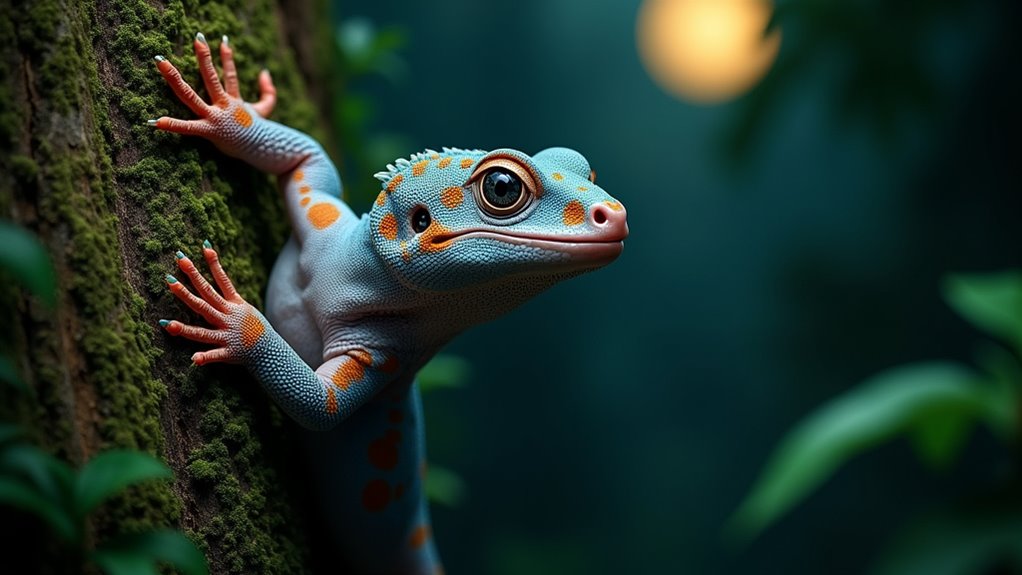
From dense tropical forests to urban Asian cities, you’ll likely hear the tokay gecko before you ever spot one. Their distinctive “to-kay” call cuts through the night, serving as both a territorial warning and a namesake.
At up to 35 cm long, these are giants in the gecko world. Their cylindrical bodies feature vibrant bluish-gray skin dotted with orange and red spots. Males typically display more vivid coloration than females, making them easier to identify in the wild. Don’t let their striking appearance fool you – tokay geckos aren’t interested in making friends. They’re solitary creatures with notoriously bad tempers and powerful bites.
Their specialized toe pads, covered in microscopic hairs, allow them to cling to almost any surface. These remarkable lizards can be spotted in the lush forests surrounding Vang Vieng, a popular town in Laos known for its natural beauty.
Despite their aggressive reputation, tokay geckos provide valuable ecosystem services by controlling insect populations throughout their Asian homeland.
Impressive in both size and strength, Asia’s atlas beetle earns its “living tank” nickname through its formidable appearance and remarkable resilience. You’ll find these glossy black giants in Southeast Asia’s tropical rainforests, where males use their trident-shaped horns to battle for mates while females quietly lay eggs in dense foliage.
These natural wonders can reach a staggering 13 cm in length, making them among the world’s largest beetles. Their fascinating lifecycle includes:
Males are significantly larger than females, with some specimens growing to an impressive 120 mm in length.
These beetles can be found in both Thailand and Philippines, two popular destinations known for their rich biodiversity and tropical ecosystems.
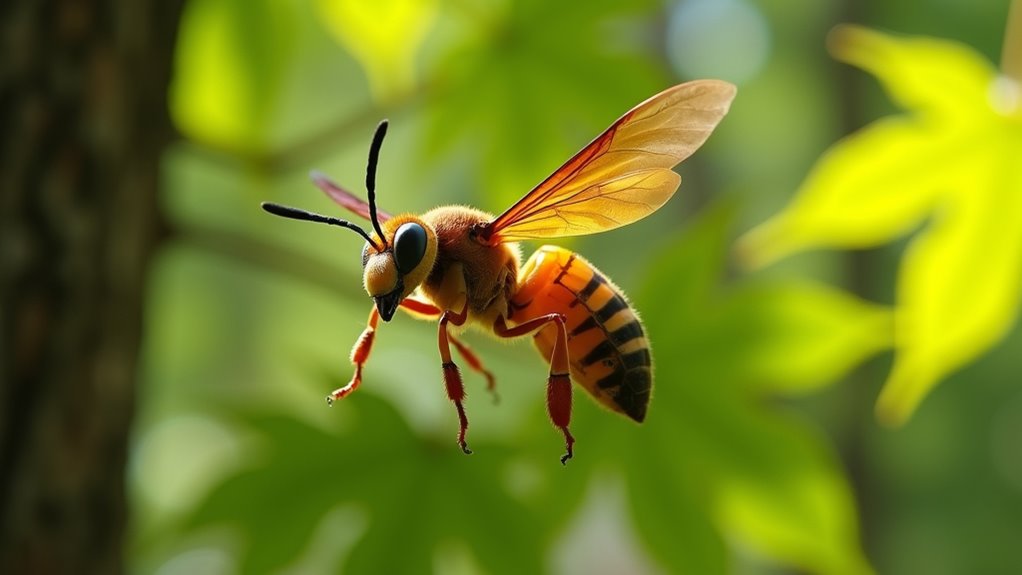
Known as “murder hornets” in popular media, Asian giant hornets represent one of nature’s most formidable flying predators. At 1.75 inches long with a quarter-inch stinger, these insects pack a powerful venomous punch that can be dangerous to humans.
Asian giant hornets deliver a painful venomous sting through their quarter-inch stinger, earning their menacing “murder hornet” nickname.
Native to East Asia, they’ve recently been detected in Washington state, potentially spreading along the Pacific Northwest. You’ll find them nesting near rotten pine roots or in rodent tunnels in low mountains and forests.
These hornets prey primarily on other insects, particularly honey bees, decimating entire colonies in hours. Their horrifying attack involves three phases: hunting, slaughter phase, and occupation where they feed on honey bee brood. Their mandibles efficiently tear apart larger prey, while they’ll also feed on tree sap when needed.
Early detection is essential for controlling their spread, making public awareness indispensable for successful eradication efforts. Similar to venomous snakes in the Philippines, these hornets require careful identification to prevent dangerous encounters.
When wildlife meets modern technology, few stories capture the imagination quite like that of the Sulawesi macaque. These intelligent primates from Indonesia became world-famous when one took a selfie with a photographer’s camera, sparking an international copyright dispute.
You’ll find these endangered creatures in Sulawesi’s diverse forests, living in complex social groups with fascinating communication patterns:
The macaque, named Naruto, was the subject of a lawsuit by PETA who claimed the animal should own the copyright to its famous selfie photos.
While many travelers debate whether to visit the Philippines or Vietnam for their vacation destinations, wildlife enthusiasts often seek out Indonesia specifically to observe these fascinating primates in their natural habitat.

From the lively forests of Sulawesi, we now head underwater to meet one of Asia’s most enchanting marine mammals. The dugong, often called a “sea cow,” grazes peacefully in the shallow coastal waters of the tropical Indo-Pacific region.
You’ll find these streamlined creatures cruising through seagrass meadows with their distinctive bristled snouts, uprooting their exclusively vegetarian meals. They’re impressive animals—growing up to 3 meters long and weighing up to 900kg—with lifespans reaching 70 years. Their unique skull features a sharply down-turned premaxilla that helps them efficiently browse on seagrass.
Southeast Asia, particularly the Philippines’ waters around Mindanao and Palawan, hosts some of the last regional strongholds for these vulnerable creatures. Both Malaysia and Indonesia offer excellent opportunities to spot these rare marine mammals in their natural habitat.
Sadly, dugong populations face serious threats from fishing net entanglement, boat strikes, and habitat destruction. These gentle giants aren’t just ecologically important; they’ve inspired mermaid legends for centuries.
You’ve now explored nine of Asia’s most extraordinary animals, each challenging what you thought possible in nature. From big-nosed monkeys to selfie-taking macaques, these creatures prove that truth is indeed stranger than fiction. Next time you’re traveling through Asian landscapes, keep your eyes peeled for these remarkable beings. Our planet’s biodiversity remains one of its greatest treasures—yet another reminder that we must protect what we can’t replace.